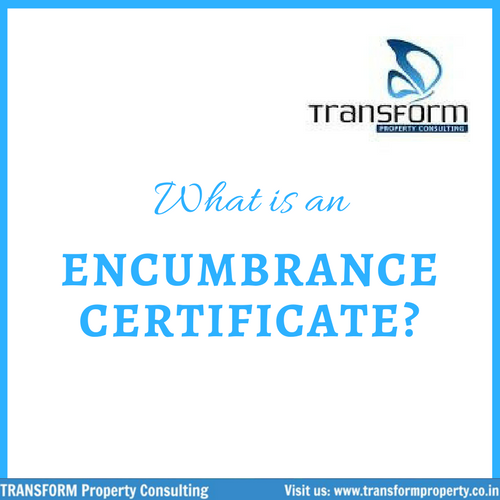What is an Encumbrance Certificate?
It goes without saying that the prime concern of a prospective buyer of a real estate property is to get clear title to it when the transaction is over. This is because a defective title will land the buyer in trouble in future. The first formality to ensure that the title is not defective is to get an official certificate from the authorities concerned viz; the sub registrar office (SRO). Such a certificate is called an Encumbrance Certificate (EC).

The EC is issued by the SRO in whose jurisdiction the particular property is situated. It has the details of transactions made on the property under reference during the specific period requested for. The facts of any legal liability involving a property are recorded in the books with the SRO. Whenever a valid request is received by an SRO, all such liabilities are listed in a certificate called Encumbrance Certificate.
What are the situations where an Encumbrance Certificate is necessary?
A proposed sale transaction is not the only situation in which an EC is requested for. Listed below are a few other instances where an Encumbrance Certificate is warranted.
- Banks and financial institutions, at the time of accepting mortgage of real estate properties as security for any loan or advance, require an Encumbrance Certificate. This is for ensuring that the property to be mortgaged is devoid of any other liability/encumbrance.
- Whenever it is necessary to ensure that the owner’s title to a specific property is clear i.e; free from other liabilities, an Encumbrance Certificate is required.
- If you have not paid the land tax or property tax for 3 years or more, the Village/Panchayat Officer may ask for an EC to update the same.
- For a loan against Provident Fund for property purchase and house construction, the Encumbrance certificate is one of the necessary documentation.
In short, the Encumbrance Certificate is a Prima Facie evidence of whether or not the owner of the property in question has a clear title to the property. Usually, banks and other institutions insist for 13 years’ EC. However instances are not very rare where such institutions insist for EC for longer periods, say 31 years or more. For example, if the title deed is registered on or before 1986, banks insist for EC from that period onwards so that the entry of the title deed is shown.
However, it should be borne in mind is that the EC is not a conclusive proof of a clear title. Why? Let’s examine that in the following lines.
Is Encumbrance Certificate a conclusive proof for clear title?
Numerous mortgages are created everyday in the sphere of banking finance. If all such mortgages are to be registered/recorded with the Sub Registrar Office, the process would become cumbersome, time consuming and expensive. Therefore banks are specially empowered to accept another type of valid mortgages named equitable mortgages. It is very simple in procedure and less expensive. But the biggest handicap of the equitable mortgage is that it is neither registered nor recorded in the books with SRO. This implies that such mortgages are not reflected in the EC. This may lead to fraudulent transactions in the property market.
However, there is another system for verifying the existence of such mortgages, which is called the CERSAI Registry. (Central Registry of Securitisation Asset Reconstruction and Security Interest of India). CERSAI is a company licensed under section 25 of the Company’s Act 1956 and registered by the Registrar of companies.
CERSAI is a central system registry of mortgages and keeps records of charges created and satisfied on a specific asset. It is formulated to guard against fraudulent transactions arising out of same asset being mortgaged with multiple lenders.
Any public member can get access to CERSAI Registry for examination of records on payment of fees prescribed under the SARFAESI rules 2011).
Now let’s come to the procedure of getting Encumbrance Certificate.
